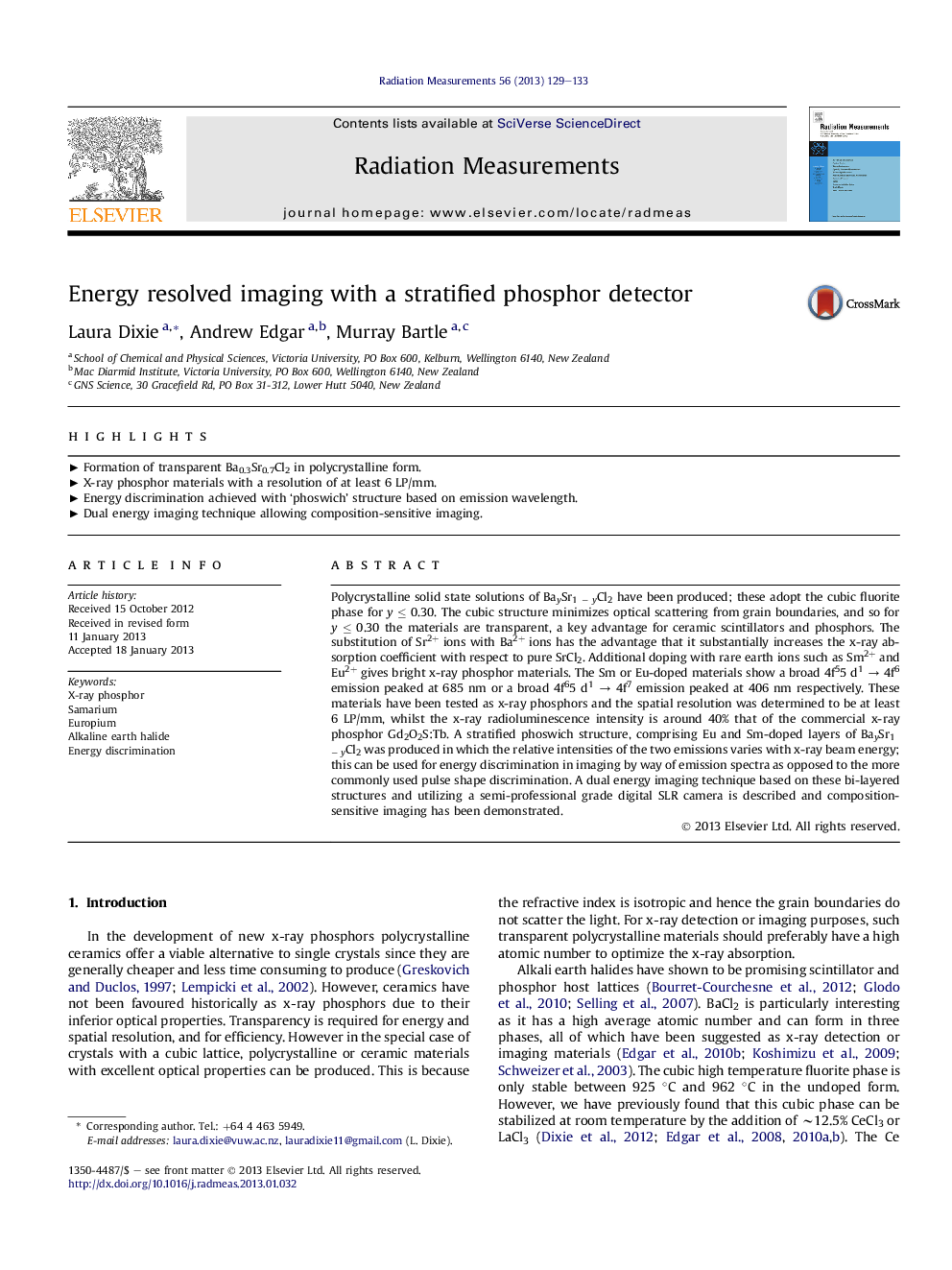| Article ID | Journal | Published Year | Pages | File Type |
|---|---|---|---|---|
| 1888317 | Radiation Measurements | 2013 | 5 Pages |
Polycrystalline solid state solutions of BaySr1 − yCl2 have been produced; these adopt the cubic fluorite phase for y ≤ 0.30. The cubic structure minimizes optical scattering from grain boundaries, and so for y ≤ 0.30 the materials are transparent, a key advantage for ceramic scintillators and phosphors. The substitution of Sr2+ ions with Ba2+ ions has the advantage that it substantially increases the x-ray absorption coefficient with respect to pure SrCl2. Additional doping with rare earth ions such as Sm2+ and Eu2+ gives bright x-ray phosphor materials. The Sm or Eu-doped materials show a broad 4f55 d1 → 4f6 emission peaked at 685 nm or a broad 4f65 d1 → 4f7 emission peaked at 406 nm respectively. These materials have been tested as x-ray phosphors and the spatial resolution was determined to be at least 6 LP/mm, whilst the x-ray radioluminescence intensity is around 40% that of the commercial x-ray phosphor Gd2O2S:Tb. A stratified phoswich structure, comprising Eu and Sm-doped layers of BaySr1 − yCl2 was produced in which the relative intensities of the two emissions varies with x-ray beam energy; this can be used for energy discrimination in imaging by way of emission spectra as opposed to the more commonly used pulse shape discrimination. A dual energy imaging technique based on these bi-layered structures and utilizing a semi-professional grade digital SLR camera is described and composition-sensitive imaging has been demonstrated.
► Formation of transparent Ba0.3Sr0.7Cl2 in polycrystalline form. ► X-ray phosphor materials with a resolution of at least 6 LP/mm. ► Energy discrimination achieved with ‘phoswich’ structure based on emission wavelength. ► Dual energy imaging technique allowing composition-sensitive imaging.
